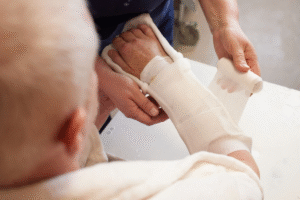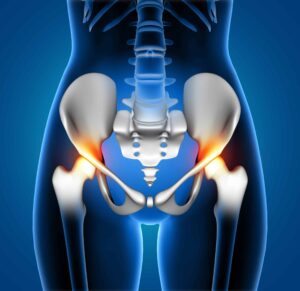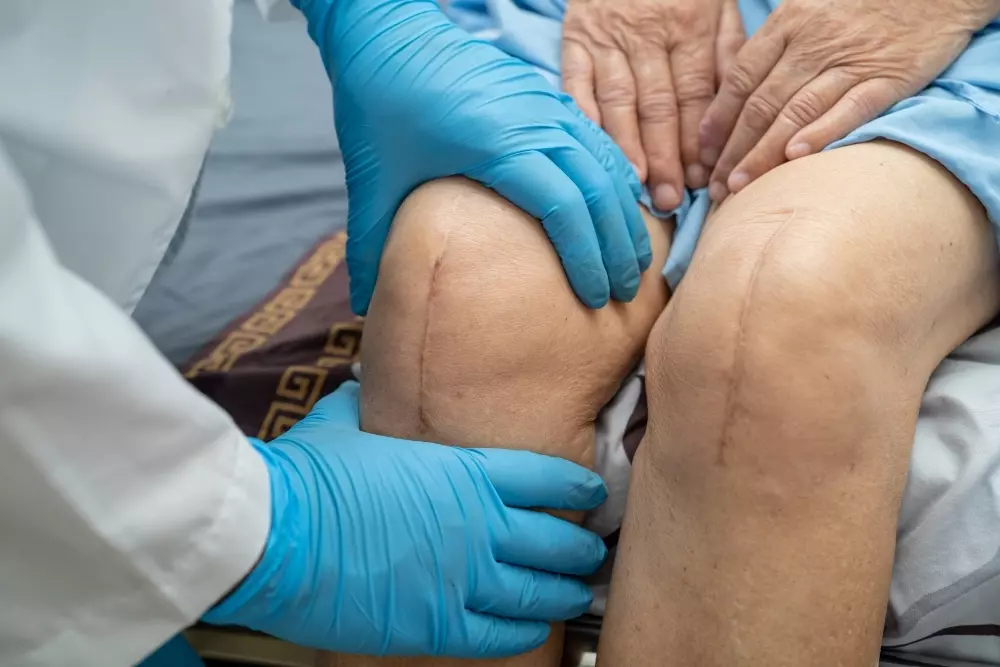Understanding Total Knee Replacement
Total knee replacement is a surgical procedure designed to relieve pain and restore function in severely damaged knee joints. This procedure involves replacing worn or damaged cartilage and bone with artificial components, called implants. The goal is to improve mobility, reduce pain, and help individuals regain independence in daily activities. Total knee replacement is most often performed for severe arthritis, including osteoarthritis, rheumatoid arthritis, or post-traumatic arthritis. While less invasive options like medication, physical therapy, and injections can help manage pain, total knee replacement becomes necessary when these measures no longer work. A total knee replacement differs from a partial knee replacement, which only replaces part of the knee joint. Choosing the right procedure depends on the extent of joint damage and the patient’s lifestyle needs.
Signs That You May Need a Total Knee Replacement
Persistent knee pain that interferes with daily life is one of the most common indicators that total knee replacement may be necessary. The pain often becomes constant and may worsen with activity or at night. Many patients experience significant stiffness and swelling that restricts movement and affects quality of life. Another sign is a loss of mobility that makes everyday tasks, such as climbing stairs or walking, increasingly difficult. When conservative treatments such as medication, physical therapy, or lifestyle changes fail to relieve symptoms, surgical intervention becomes a strong consideration. Physicians rely on diagnostic tools such as X-rays, MRI scans, and physical examinations to assess joint health and determine the extent of damage. Recognizing these signs early can help ensure timely treatment and better outcomes.
Preparing for Total Knee Replacement Surgery
Preparation for total knee replacement is a critical step in ensuring a smooth procedure and recovery. Patients undergo a thorough medical evaluation, which often includes blood tests, imaging scans, and consultations with specialists. Prehabilitation exercises are often recommended to strengthen muscles around the knee, improving surgical outcomes and speeding recovery. Understanding anesthesia options is also important, as patients may receive either general anesthesia or spinal anesthesia depending on their condition and surgeon’s recommendation. Preparing the home for recovery is essential — this might include setting up mobility aids such as walkers or installing handrails for safety. Emotional preparation is equally important, as understanding what to expect can reduce anxiety and improve confidence before surgery. Planning for post-surgery care, including arranging support from family members or caregivers, is a key part of preparation.
The Total Knee Replacement Procedure
The total knee replacement procedure is a carefully planned operation performed in a hospital setting. It begins with administering anesthesia to ensure patient comfort during surgery. The surgeon makes an incision over the knee to access the damaged joint. Damaged cartilage and bone are removed, and the knee surfaces are shaped to fit the artificial components. These implants, usually made of metal alloys and high-grade plastics, replicate the movement and function of a natural knee. The procedure usually takes between one to two hours, depending on complexity. Surgeons follow strict safety protocols to minimize infection risk and ensure precision. Advances in surgical techniques, such as computer-assisted navigation, improve implant placement and long-term success rates.
Recovery and Rehabilitation
Recovery after a total knee replacement is a gradual process that requires patience and dedication. Immediately after surgery, patients are closely monitored for pain control, swelling, and signs of complications. Pain management strategies include medication, ice therapy, and elevation. Physiotherapy begins soon after surgery, often within 24 hours, to encourage movement and prevent stiffness. Rehabilitation programs typically include specific exercises to restore strength, flexibility, and balance. The timeline for recovery varies — most patients can resume light daily activities within six weeks and achieve full mobility within three to six months. Support from healthcare providers, physical therapists, and family members plays a vital role in ensuring a successful recovery.
Risks and Considerations
Like any surgical procedure, total knee replacement carries certain risks that patients should understand. These may include infection, blood clots, implant loosening, and nerve or blood vessel damage. Some patients may experience persistent pain or stiffness despite successful surgery. Recovery speed depends on factors such as age, overall health, physical fitness, and adherence to rehabilitation programs. The durability of knee implants also varies, with most lasting 15 to 20 years or more with proper care. Patients should be aware of potential complications and maintain regular follow-ups with their surgeon. Making lifestyle changes such as maintaining a healthy weight and avoiding high-impact activities can prolong the life of the implant.
Living After Total Knee Replacement
Living with a new knee joint requires adapting to changes in mobility and taking steps to protect the implant. Returning to daily activities often begins gradually, with a focus on low-impact exercises such as swimming, cycling, and walking. High-impact sports like running or jumping are generally discouraged to prevent wear and damage. Maintaining a healthy weight and a balanced diet supports long-term joint health. Regular physiotherapy sessions or home exercises help retain strength and flexibility. Mental and emotional health are also important, as adjusting to a new knee joint can be challenging for some patients. Embracing a positive mindset and staying engaged in recovery activities can greatly enhance overall satisfaction with the procedure.
FAQ About Total Knee Replacement
How long does a total knee replacement last?
Most total knee replacements last between 15 to 20 years, and with proper care, some can last even longer.
What are the signs of a failed knee replacement?
Signs may include increased pain, swelling, instability, or difficulty moving the joint.
Is total knee replacement painful?
Pain is normal after surgery, but it can be managed effectively with medication, ice therapy, and physiotherapy.
Can I avoid knee replacement surgery?
Some people manage knee pain with lifestyle changes, medication, and physical therapy, but surgery is recommended when these options no longer work.
How soon can I walk after surgery?
Many patients begin walking with assistance within 24 hours after surgery, although full mobility will develop over weeks to months.
Takeaway
Total knee replacement can dramatically improve quality of life by relieving pain and restoring mobility. Success depends on early recognition of symptoms, thorough preparation, effective surgical procedures, and disciplined rehabilitation. Understanding the risks and maintaining lifestyle habits that protect the new joint are essential for long-term results. This procedure offers a powerful solution for those whose knee pain has limited their independence, providing them with a chance to return to an active and fulfilling life.











